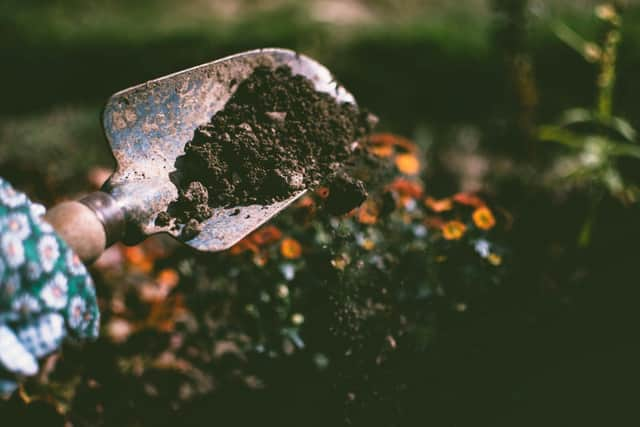Gardening experts reveal the five plants that will improve natural drainage in your garden
and live on Freeview channel 276
Deep-rooted plants, such as willows and certain types of grasses, can help to drain water away from the surface by channelling it deeper into the soil.
Additionally, the roots of these plants can break up compacted soil, increasing its permeability and improving water infiltration. Planting vegetation that thrives in wet conditions can also help by utilising the excess water, thus reducing waterlogging.By carefully selecting and positioning plants that can tolerate or even benefit from excess water, gardeners can naturally mitigate poor drainage issues.
Advertisement
Hide AdAdvertisement
Hide AdAfter speaking to a team of experts from Drainage Shop we found out what plants they’d suggest to help with your drainage problem.


Japanese Water Iris ‘Rose Queen’
The Japanese Water Iris 'Rose Queen', recognised for its decorative appeal, can also enhance drainage in gardens due to its high tolerance for water and preference for moist conditions. This species thrives in damp environments, absorbing excess moisture in soil prone to waterlogging. Its dense, fibrous root system not only improves soil structure for better water infiltration but also stabilises the soil, reducing erosion in areas with water runoff. By utilising 'Rose Queen' in damp areas, gardeners can transform these spots into visually appealing features whilst addressing drainage issues. Moreover, its contribution to garden biodiversity supports a healthy ecosystem, indirectly benefiting soil health and drainage. For the best results, combining this plant with other water-tolerant species and drainage solutions.
Goat’s Beard
Goat's Beard, with its impressive plumes of creamy white flowers and fern-like foliage, not only adds visual interest to garden spaces but also can play a role in improving drainage. Like the Japanese Water Iris, Goat's Beard is suited to moist environments, making it ideal for use in parts of the garden that may experience poor drainage. This plant's preference for damp conditions means it can help manage excess moisture by absorbing water, thereby reducing waterlogging.
Its robust root system enhances soil structure, promoting better water infiltration and helping to prevent soil erosion by stabilising the ground in areas susceptible to water runoff. By incorporating Goat's Beard into wetter sections of the garden, gardeners can mitigate drainage problems while adding aesthetic value.
Lily Of The Valley
Advertisement
Hide AdAdvertisement
Hide AdLily of the Valley, with its delicate bell-shaped flowers and sweet fragrance, is another plant that, while primarily valued for its beauty and scent, can indirectly assist with garden drainage. Adaptable to a range of conditions, including shaded and moist areas, it is less about directly absorbing excess water like the previously mentioned plants and more about its versatility in garden design for moisture management.
Planting Lily of the Valley can help in utilising areas under trees or in shaded parts of the garden where other plants might struggle due to excessive moisture or lack of sunlight. Its dense ground-covering growth habit helps to moderate soil moisture levels by providing shade to the soil, reducing evaporation, and maintaining a more consistent soil moisture level.
Pickerel Weed
Pickerel Weed, with its purple flowers and broad leaves, thrives in wet conditions, ideal for water features or moist areas. It stabilises pond banks, reducing erosion and improving water clarity by anchoring soil. This plant also enhances water quality by absorbing excess nutrients, helping to control algae growth. Supporting biodiversity, it provides habitat and food for wildlife, including pollinators and aquatic organisms.
Largest Masterwort
Largest Masterwort, a perennial native to Europe, including the UK, is renowned for its adaptability to various soil conditions, including those in damp or poorly drained gardens. Its robust root system aids in enhancing soil structure, thereby facilitating better water infiltration and drainage. This characteristic makes it an ideal plant for garden areas prone to waterlogging, as it can help to mitigate such conditions by improving the overall drainage capacity of the soil, thereby promoting a healthier garden ecosystem.